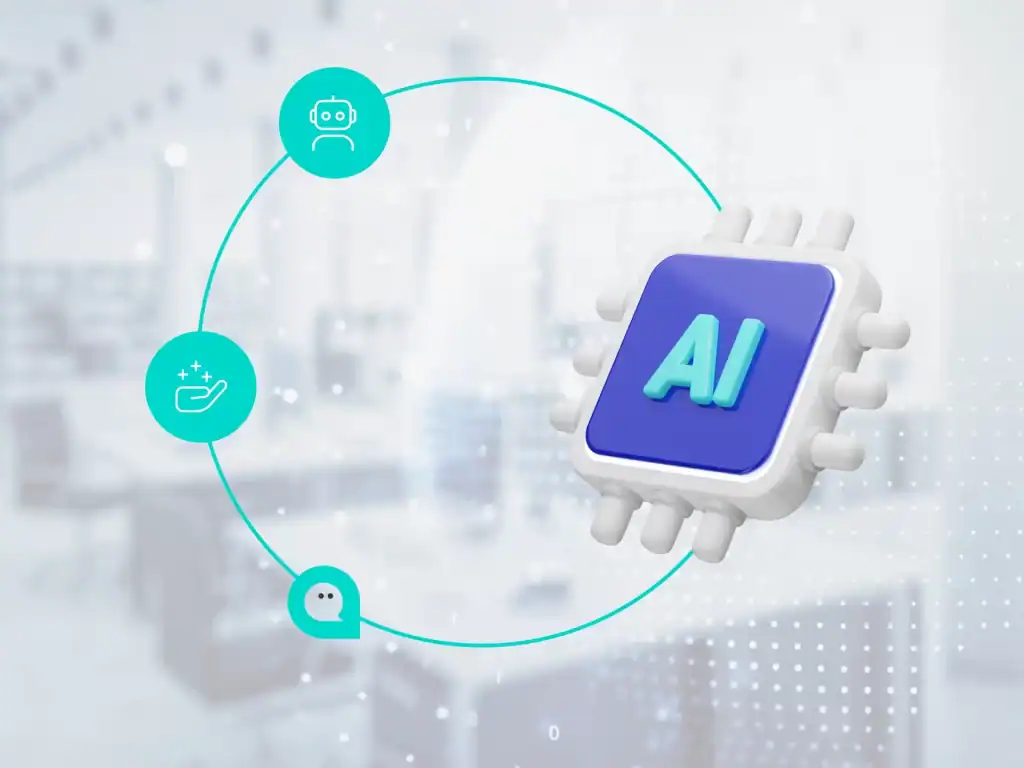Conversational artificial intelligence refers to those technologies, such as chatbots and virtual agents, with which users can interact. Conversational AI employs big data, machine learning and natural language processing to mimic human interactions and recognize speech and text inputs. Thus, conversational AI relies on components that enable it to process, understand, and generate responses naturally.
Conversational AI: automated communication and user intentions
Conversational artificial intelligence can thus be regarded as a kind of synthetic brain power, making machines capable of understanding, processing and responding to human language. One can think of conversational AI as a “brain” that powers a chatboat or virtual agent that can understand a user’s intentions, decipher their language and context, and then respond in a “human” way.
Algorithms, features, data, and basic elements of machine learning, continuously improve with experience. As the input is refined, the artificial intelligence platform also improves.
How conversational AI works
An ancient proverb states, “To help someone, you must first understand what they need”. Conversational AI translates human language so that the machine can understand it and enables it to respond in a human-like way. There are several “steps” behind the scenes to make this process happen.
The first step involves natural language processing. The NLP is responsible for correcting spelling, identifying synonyms, interpreting grammar, recognizing sentiment, and breaking down a request into words and phrases that make it easier for the virtual agent to understand. Subsequently, a series of Machine learning models, such as natural language understanding (NLU), which enable conversational artificial intelligence to identify the correct intent of a request and extract the most important information.
Once the request is correctly understood, a response must be formulated to the user. The virtual agent must be able to communicate in a personalized manner, and conversational AI, by combining information gathered using the NLU, can respond appropriately and in a manner more like interacting with a human being than a machine. Over time, as the virtual agent answers more questions and as AI trainers help improve his knowledge, conversational AI becomes smarter, learning new variations for each intent and improving its responses.
Conversational AI and language processing: virtual assistants move closer to humans
Natural language processing involves four stages: input generation, input analysis, output generation, reinforcement learning. In essence, an unstructured data set is transformed into a readable format, which is then analyzed to generate an appropriate response by the artificial intelligence system. The underlying algorithms improve the quality of responses over time: the more they interact with a user, the more they learn from experience.
- Input generation. Users provide input, either vocally or textually.
- Input analysis. If the input is textual, then the conversational AI will use natural language understanding to decipher the meaning of the input and derive the intention. If, on the other hand, it is speech, then it will exploit a combination of automatic speech recognition and natural language understanding in order to analyze the data.
- Dialogue management. During this phase, it is the natural language generation to formulate a response.
- Learning by reinforcement. Machine learning algorithms refine responses over time, improving their accuracy and ensuring an ever-higher standard.
How to set up conversational artificial intelligence
Conversational artificial intelligence begins at the moment when you think about how potential users might want to interact with a given product and the main questions they might ask. Conversational AI tools could therefore be used to direct customers to relevant information. Therefore, one can follow some precise procedures for setting up conversational artificial intelligence:
- Define the list of frequently asked questions for end users. This process helps to establish the main needs of the users.
- We will need to teach the AI tool the ways in which a user can formulate or ask for a certain type of information.
- Use objectives to understand and construct relevant names and keywords, such as thinking about what may determine users’ intentions.
- Creating a meaningful dialogue with the user. Intents allow a machine to decipher what the user is asking so that it can provide relevant answers.
What are the benefits of conversational AI?
Conversational artificial intelligence enables efficient handling of first-level service requests. In this way, human resources can devote themselves to more complex and value-based care activities. The number of solved inquiries increases and the flow of contacts is better managed. I wait times result in shorter and direct messaging ensures faster and easier interactions.
Conversational AI is a cost-effective solution for many business processes and promotes a savings in terms of time and resources.
Providing customer support through conversational interfaces can reduce business costs. Chatbots and virtual assistants can respond instantly, providing 24-hour availability to potential customers. Companies can program conversational AI to handle various use cases, being able to ensure completeness and consistency, as well as enabling the human resources to be available for more complex queries.
Customers can interact more quickly and frequently with brands, conversational artificial intelligence allows them to avoid long wait times at the call center and to improve the overall customer experience: if user satisfaction increases, companies will benefit from increased loyalty and conversion to purchase. Conversational artificial intelligence also is very scalable and enables flexible and streamlined management of large volumes of interactions.
XCALLY and conversational AI: how to perfect the customer experience
XCALLY allows you to create a voice bot through which you can manage a phone call. Google can be employed for Natural Language Understanding (NLU), speech to text (speech to text) and text to speech (text to speech) conversion. In practice, a user calls a brand’s customer care, talks to a robot, and the system responds textually, converting the message to voice and providing all the support the customer needs.
XCALLY perfects the more classic experience by being able to capture silence and detecting the moment when the user stops talking. In fact, a UniMRCP server has been implemented in the system, thanks to which a communication is generated between XCALLY and Google Speech Recognition: the voice bot intervenes instantly when the user stops talking, without having to wait or being interrupted.
If the voice bot responds in real time, the user experience will be at a higher level and the fluidity of the interaction will improve the contact center’s IVR flow and customer satisfaction. In addition, conversational AI will make it possible to handle out-of-hours phone calls, solve customer problems, and automatically book a meeting or appointment. Results are constantly monitored, optimizing bot performance day after day and constantly refining the interaction with customers.
Conversational AI: a case study. How to improve lead management with XCALLY and Dialogflow
Spanish company Colabora has chosen XCALLY partner Inicia Soluciones with the intent to improve lead management and increase funnel conversion of sales regarding surveillance and alarm systems. This created a voice bot IVA (Intelligent Virtual Assistant) using Cally Square IVR Designer – seamlessly integrated with Google Dialogflow, TTS and ASR – combined with dialing campaigns.
XCALLY Dialer so calls potential customers and XCALLY Conversational AI IVR provides an introduction about the product offering and asks the potential customer if they are interested in receiving more information. Based on the answer, the voice bot performs three different operations: forwards the call to an agent (in case interest arises); the number is saved in a callback list (in case of a follow-up contact request); however, if the customer is not interested, the bot asks for the reason and stores the information for analysis purposes.
Through the implementation of a Conversational AI system, there has been nearly 80% improvement in the performance of customer service agents, thanks to the prefiltering of contacts handled by the bot, and almost 30% improvement in initial engagement with unknown leads.
Try the omnichannel strategy for your business
XCALLY, thanks to the multichannel and technological innovations created by the INGO group, is able to build specific projects for each company , following the process from the initial analysis phase to the implementation of integrated, scalable and modular omnichannel strategies. The Made in Italy platform at the service of the customer experience.





